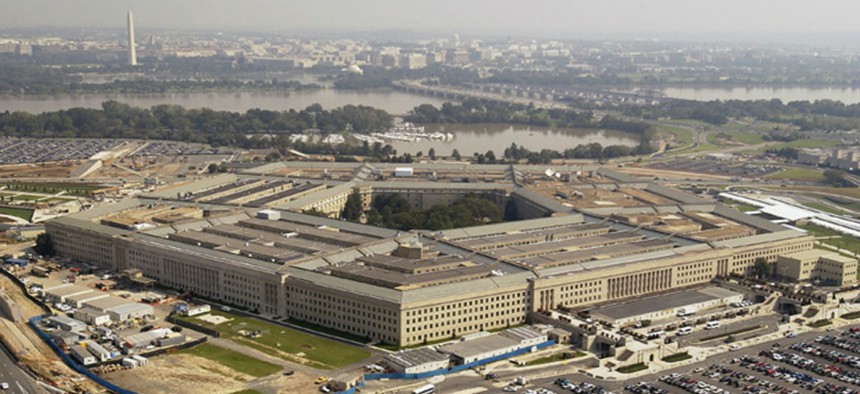
Defense Department file photo
Military Housing at Risk from Poor Utility Maintenance, Watchdog Finds
Electrical and environmental system flaws found consistently at bases around the world.
Faulty sprinkler systems, exposed wiring and unchecked household mold were among the deficiencies in military base housing around the world documented in a report released this month by Defense Department inspector general investigators.
In the capstone report in a series of six over the past three years, auditors warned of threats to health and safety of service families by inconsistent maintenance by the services and support contractors. The watchdog documented ”3,783 deficiencies in electrical system safety, fire protection systems, and environmental health and safety,” the report said. “During these inspections, the DoD OIG issued 12 notices of concern, detailing 319 critical deficiencies requiring immediate action at 24 of the 36 installations inspected. …We found that the average number of deficiencies per building was consistent regardless of location.”
Numbers from a fiscal 2015 baseline report show that the Defense Department manages a global real property portfolio of nearly 562,000 facilities, including about 280,000 buildings located at more than 4,800 sites worldwide and covering more than 24.9 million acres, the IG noted. Their locations span 50 states, seven U.S. territories with outlying areas and 42 foreign countries (notably Germany, Japan and South Korea), at a face value of $880 billion.
“The pervasiveness of electrical system safety, fire protection, and environmental health and safety deficiencies was the most significant trend that we observed,” investigators wrote, fingering a “lack of adequate preventative maintenance and inspections being performed.”
The department was credited, however, with improvements to its policy and guidance on health and safety requirements in military housing since 2010. But none of the public inspections—which are not carried out by independent parities--“comprehensively examine the effectiveness of facility sustainment processes with respect to the overall health and safety of occupants,” the IG found.
The IG recommended that inspections be subject to independent verification. The report recommended that the Defense undersecretary for acquisitions, technology and logistics establish a joint working group to improve facility inspection and maintenance, develop standard procedures or templates for services performed under certain maintenance contracts, and develop requirements for risk assessments for contractors.
The secretaries of the military services, the report continued, should annually perform at least two comprehensive, independent inspections of installations.
Pentagon managers largely agreed, though the principal deputy assistant Defense secretary for energy, installations and environment disagreed with the recommendation to develop requirements for risk assessments.







